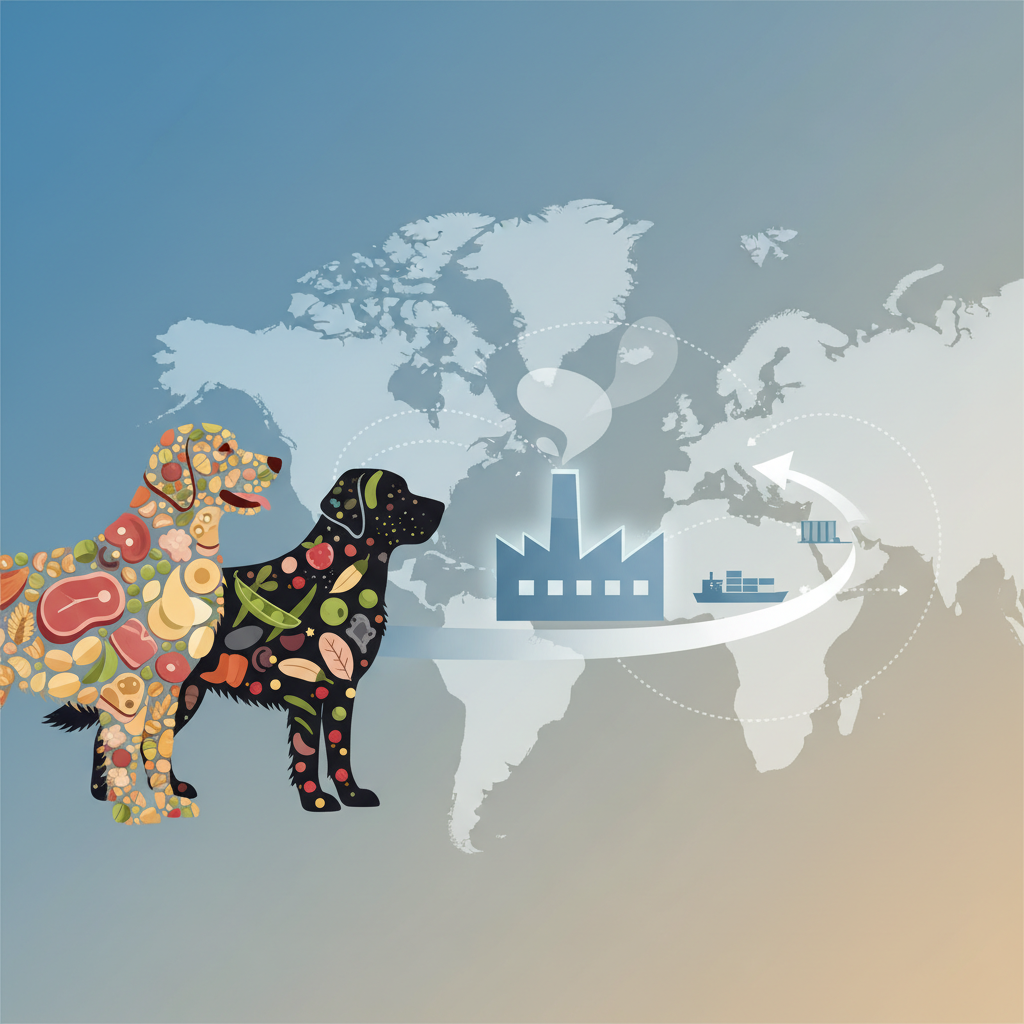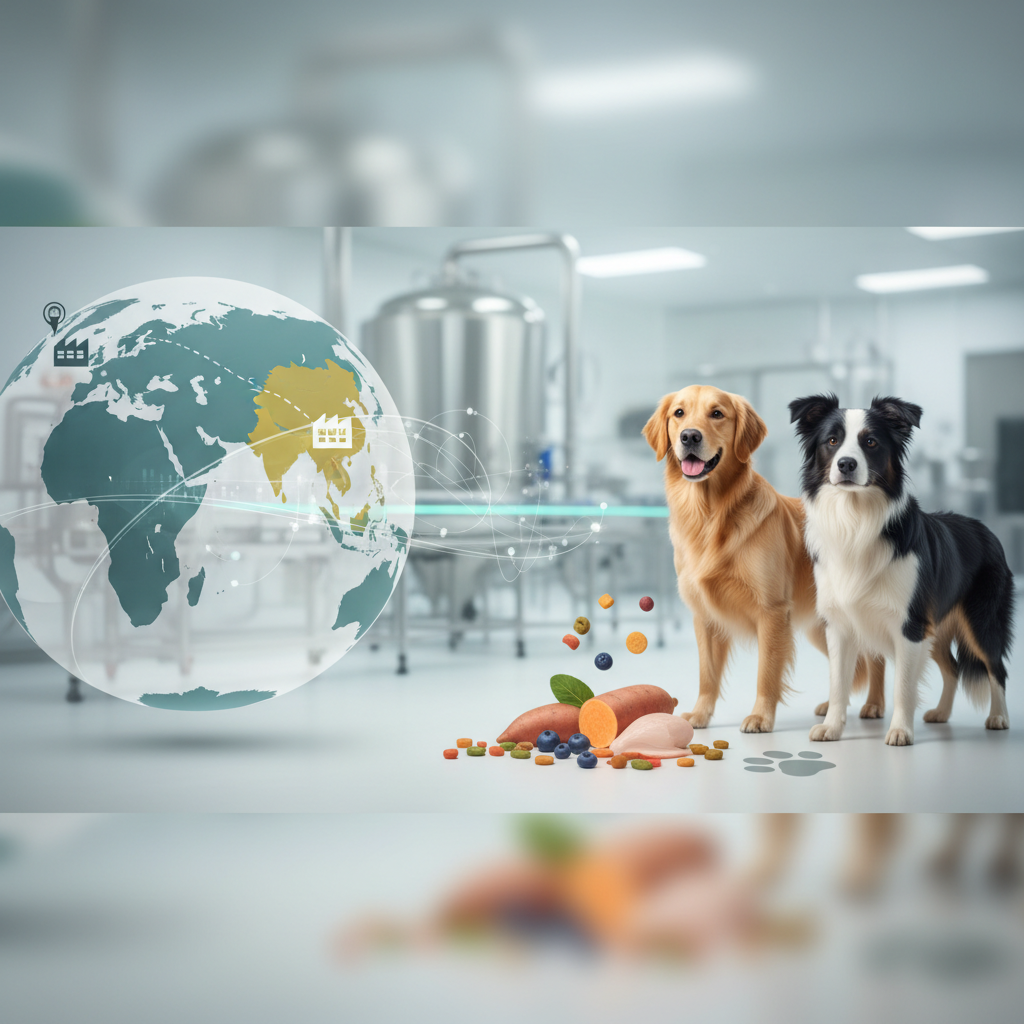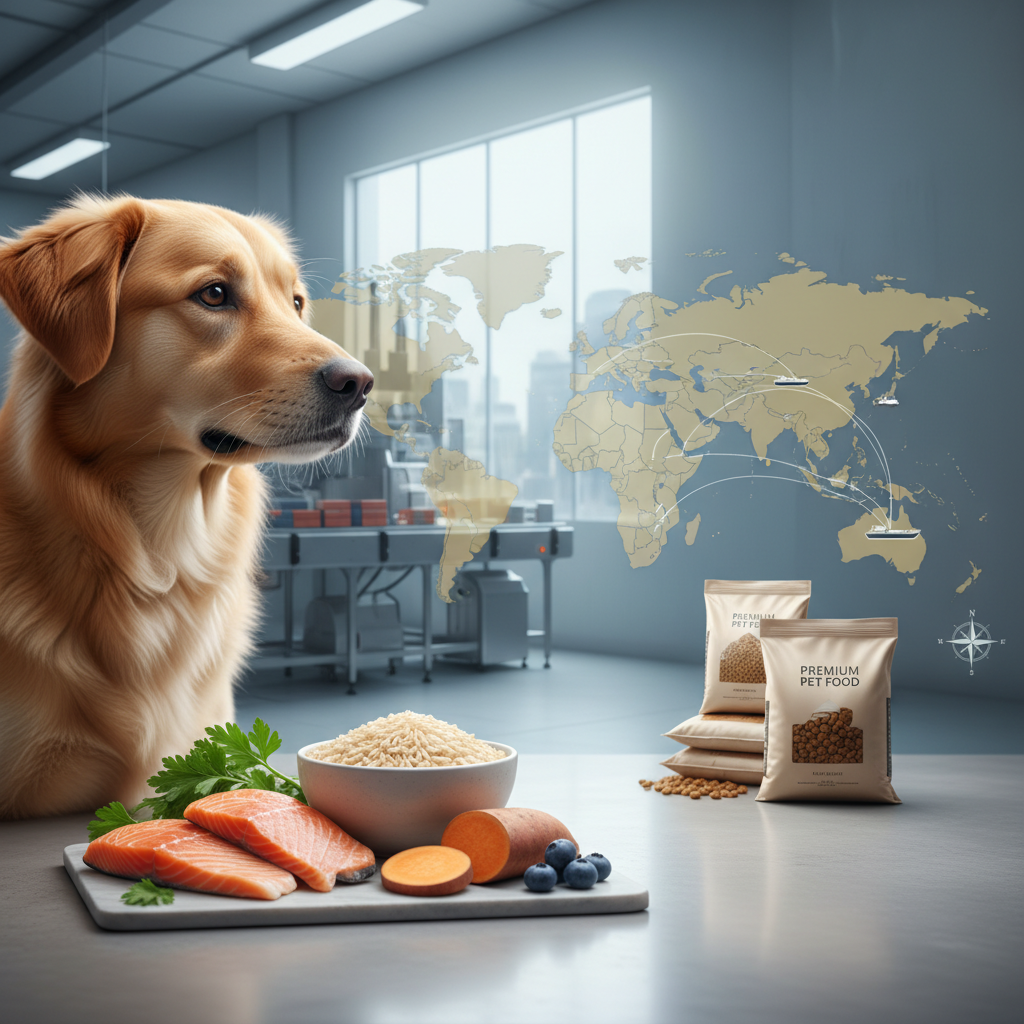

The global pet food industry is a dynamic and growing sector, with the European Union standing out as a particularly attractive, yet complex, market. For manufacturers, distributors, wholesalers, and private label brand owners looking to expand their reach, understanding the intricacies of exporting dog food to the EU is not just an advantage—it is a necessity. This comprehensive guide will equip you with the knowledge and actionable insights needed to successfully navigate the EU dog food market, from regulatory compliance to supply chain optimization and strategic market entry.
The Lure of the European Dog Food Market
The European Union represents a significant opportunity for the dog food industry. With a substantial pet-owning population and a strong consumer emphasis on pet health and wellness, the demand for high-quality, nutritious dog food is consistently robust.
Market Size and Growth Potential
The European pet food market is one of the largest globally, valued at tens of billions of euros annually. It continues to exhibit steady growth, driven by factors such as increasing pet ownership, the humanization of pets, and a willingness of owners to spend more on premium products. This expansive market offers diverse segments, from premium organic options to specialized therapeutic diets, providing ample room for various B2B players to carve out their niche.
Key Consumer Trends Driving Demand
Understanding consumer trends is paramount for B2B success. European dog owners are increasingly sophisticated in their choices, prioritizing:
- Natural and Clean Label Products: A demand for foods free from artificial colors, flavors, and preservatives.
- Functional Ingredients: Products that offer specific health benefits, such as joint support, digestive health, or coat improvement.
- Sustainable and Ethical Sourcing: Growing concern over environmental impact and animal welfare in ingredient procurement.
- Grain-Free and High-Protein Diets: Mirroring human dietary trends, these options remain popular.
- Transparency: Consumers want to know where ingredients come from and how the food is produced.
These trends directly influence procurement decisions by importers, distributors, and private label brands, making it crucial for manufacturers to align their product offerings.
Navigating the Regulatory Labyrinth: EU Compliance Essentials
Exporting dog food to the EU is not without its challenges, primarily due to the bloc's stringent regulatory framework. Compliance is non-negotiable and requires meticulous attention to detail.
Understanding EU Pet Food Legislation
The EU has some of the most comprehensive and rigorous pet food regulations in the world, designed to ensure product safety, quality, and fair labeling. Key legislative acts include:
- Regulation (EC) No 767/2009: This is the cornerstone regulation on the placing on the market and use of feed, defining what constitutes pet food, acceptable ingredients, and labeling rules.
- Hygiene Regulations (e.g., Regulation (EC) No 1069/2009 and Regulation (EU) No 142/2011): These govern animal by-products not intended for human consumption, dictating sourcing, processing, and handling standards for ingredients like meat, fish, and dairy.
- Contaminant Regulations (e.g., Regulation (EC) No 1881/2006): Sets maximum levels for various contaminants in foodstuffs, including pet food.
Familiarity with these regulations is essential. Ignorance can lead to costly product recalls, border rejections, and reputational damage.
Ingredient Sourcing and Approved Additives
All ingredients used in dog food destined for the EU must be sourced from approved establishments and comply with EU animal health and public health standards. Specific attention must be paid to:
- Animal By-Products (ABPs): Only ABPs from animals fit for human consumption or those from specific approved categories can be used.
- Novel Ingredients: Any ingredient not traditionally used in pet food may require specific authorization.
- Feed Additives: The use of feed additives (e.g., vitamins, trace elements, preservatives, colorants) is strictly regulated. Only additives authorized by the European Food Safety Authority (EFSA) and listed in the EU Register of Feed Additives can be used, and only within specified maximum levels.
Manufacturers must maintain robust documentation to prove the origin and compliance of all raw materials.
Labeling Requirements: What Manufacturers Need to Know
EU pet food labeling is highly detailed. Labels must provide clear, accurate, and non-misleading information, including:
- Product name and type of animal.
- A list of ingredients in descending order by weight.
- Analytical constituents (e.g., crude protein, crude fat, crude fiber, crude ash, moisture).
- Nutritional additives (e.g., vitamins, trace elements).
- Instructions for proper use and feeding guide.
- Batch number and best-before date.
- Net weight.
- Manufacturer or distributor name and address.
- EU approval number of the manufacturing plant.
Any claims made (e.g., "grain-free," "hypoallergenic") must be substantiated and not misleading. Non-compliant labeling is a common reason for customs delays and rejections.
The Importance of Traceability and Documentation
Full traceability from farm to fork (or bowl) is a core principle of EU food law. Manufacturers must implement robust traceability systems that allow them to identify the origin of all ingredients and where their finished products have been distributed. This includes maintaining comprehensive records of:
- Raw material suppliers and their compliance certificates.
- Production processes and quality control checks.
- Batch records for finished products.
- Distribution logs.
This documentation is vital for demonstrating compliance during inspections and is critical for effective recall management if issues arise.
Building a Robust Supply Chain for EU Exports
A well-organized and resilient supply chain is fundamental to successful dog food exports to the EU. It encompasses everything from raw material sourcing to final delivery.
Raw Material Sourcing: Quality and Compliance
The journey to EU compliance begins with sourcing. Suppliers of raw materials must meet stringent quality and safety standards. Manufacturers should:
- Vet Suppliers Rigorously: Conduct audits to ensure suppliers comply with relevant animal health, hygiene, and contaminant regulations.
- Demand Certificates of Analysis (CoAs): Ensure each batch of raw material comes with documentation confirming its composition and absence of harmful contaminants.
- Prioritize Approved Sources: Use only suppliers from countries and establishments approved by the EU for the specific raw materials in question.
A proactive approach to supplier management minimizes risks further down the chain.
Manufacturing Standards: Meeting EU Expectations
Production facilities must adhere to high standards of hygiene and quality control, often aligning with principles of HACCP (Hazard Analysis and Critical Control Points). Key areas include:
- Hygiene and Sanitation: Strict protocols for facility cleanliness, pest control, and personnel hygiene.
- Process Controls: Implementing and monitoring critical control points throughout the manufacturing process to mitigate risks.
- Quality Assurance: Regular testing of raw materials, in-process samples, and finished products to ensure consistency and compliance.
- Accreditation: While not always mandatory, certifications like ISO 22000 (Food Safety Management) or FAMI-QS (Feed Additive and Premixture Quality System) can significantly bolster credibility.
Investing in quality manufacturing processes pays dividends in market access and brand reputation.
Logistics and Distribution: Efficiency and Cold Chain Management
Efficient logistics are critical for timely and cost-effective delivery. Considerations include:
- Transportation Modes: Selecting appropriate shipping methods (sea, air, road) based on cost, transit time, and product stability.
- Customs Clearance: Engaging with experienced customs brokers familiar with EU import procedures to avoid delays.
- Temperature Control: For certain ingredients or finished products, maintaining a strict cold chain is essential to preserve quality and safety. This requires specialized packaging and transport.
- Warehousing: Partnering with EU-based warehouses that meet hygiene standards and can efficiently manage inventory and distribution within the bloc.
A well-oiled logistics operation minimizes spoilage, reduces costs, and ensures product freshness.
Market Entry Strategies: Opportunities for B2B Players
Entering the EU market requires a clear strategy tailored to your business objectives and resources.
Partnering with Local Distributors
For many manufacturers, collaborating with established EU distributors is the most effective entry strategy. Local distributors offer:
- Market Knowledge: Insights into specific national markets, consumer preferences, and competitive landscapes.
- Established Networks: Access to a pre-existing network of retailers, wholesalers, and private label clients.
- Logistical Support: Often handle warehousing, local transportation, and potentially customs clearance.
- Regulatory Expertise: Can assist in navigating nuances of local regulations and labeling.
Due diligence is crucial when selecting a partner; look for those with a strong track record in pet food and a compatible business philosophy.
Private Labeling: A Strategic Growth Avenue
Private labeling presents a significant opportunity for manufacturers to leverage their production capabilities for EU brands. This involves producing dog food under a retailer's or distributor's own brand name. Benefits include:
- Volume Orders: Often leads to larger, consistent orders compared to building your own brand from scratch.
- Reduced Marketing Costs: The brand owner handles marketing and sales, reducing your overhead.
- Market Access: Allows entry into markets without extensive brand building efforts.
Manufacturers considering private label should be prepared to meet specific formulation, packaging, and quality requirements of their partners while ensuring full EU compliance for the base product.
Direct Export Challenges and Solutions
While more resource-intensive, direct export offers greater control over branding and margins. Challenges include:
- Building a Sales Force: Establishing an internal team or representatives to manage sales and marketing in the EU.
- Logistical Complexity: Directly managing all aspects of shipping, customs, and distribution.
- Regulatory Responsibility: Bearing full responsibility for compliance across all EU member states.
Solutions might involve setting up a dedicated EU subsidiary, hiring local talent, or utilizing third-party logistics (3PL) providers specializing in pet food.
Actionable Steps for EU Market Entry Success
Embarking on your EU export journey requires a structured approach. Here is a checklist to guide your efforts:
Your EU Export Checklist
- Market Research and Feasibility Study: Identify target countries, assess demand for your product type, analyze competitors, and understand pricing strategies.
- Regulatory Compliance Audit: Conduct a thorough review of your product formulations, ingredients, manufacturing processes, and proposed labeling against all relevant EU pet food regulations. Engage with regulatory consultants if necessary.
- Supply Chain Optimization: Confirm all raw material suppliers meet EU standards. Streamline your production to ensure consistent quality and traceability. Plan your logistics from origin to final destination within the EU.
- Partner Identification and Due Diligence: Research and vet potential distributors, private label clients, or customs brokers. Assess their track record, market reach, and financial stability. Formalize agreements with clear terms and responsibilities.
- Marketing and Brand Positioning (B2B focus): Develop a clear value proposition for your B2B partners. Highlight your compliance, quality assurances, unique formulations, and production capabilities. Prepare compelling presentations and product specifications tailored for importers and distributors.
By systematically addressing each of these steps, you build a solid foundation for sustainable growth in the European market. Conclusion The European dog food market offers immense potential for B2B players willing to invest the time and effort into understanding its unique landscape. While the regulatory environment is stringent, it ultimately serves to assure quality and safety, creating a level playing field for compliant businesses. By prioritizing meticulous compliance, building a robust and transparent supply chain, and adopting a strategic approach to market entry, manufacturers, distributors, and private label brand owners can unlock significant growth opportunities. Are you looking to expand your dog food business into the lucrative European market? Do you require expertise in navigating complex regulations or optimizing your supply chain for international trade? Contact us today to discuss how our insights and services can help your business thrive in the global pet food arena.


